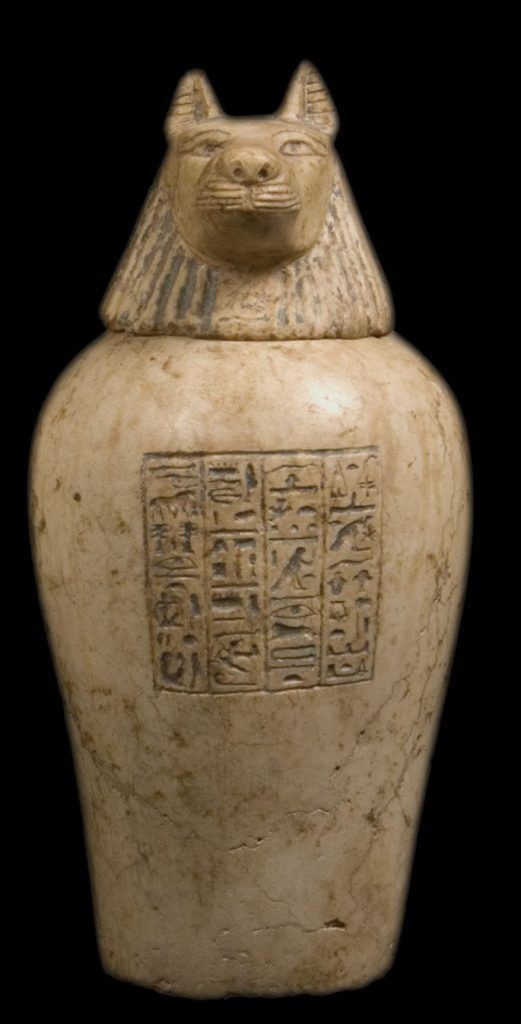
Around 850 a. C. a young Theban named Tanetamón left her city to move to Heracleópolis Magna , in Middle Egypt. She was the daughter of the first prophet of Amun Esmendes, the highest religious, political and military authority who controlled all of Upper Egypt at the beginning of the XXII dynasty. Tanetamón's mother, called Asetemakhbit, took her leave, as she trusted that in Heracleopolis she would become a high-ranking lady.
It is precisely this woman who is referred to by the inscriptions that can be seen on a canopic jar of a set of four that identifies the image of the I National Award for Archeology and Paleontology convened by the Palarq Foundation.
It is known that Tanetamón was invested as the "Great Concubine of the harem of the god Heryshef ”, since it was not necessary to be celibate to hold this position. Her task was to direct the female groups associated with the temple of the local god, whose mission was to carry out a series of specific tasks related to worship or ritual ceremonies.
Tanetamun had a daughter named Tasheritenptah, whose charge was “imyt bah de Hery shef”, a title that could be translated as “the one in which the phallus is”, alluding to the sexual and fertility character of the local god of the city. This designation could refer to the myth of divine theogamy, so the woman who bore this title had to be celibate. This priestess had her own domain, which indicates her high position within the Heracleopolitan clergy.
It is assumed that Tanetamón became a mature woman and when she died of her a tomb was built for her in the cemetery of the Third Intermediate Period found by Spanish archaeologists. The facade is covered with inscriptions that mention the owner and her daughter. Inside this enclosure, four canopic vessels with her title, name and affiliation were discovered, along with more than a hundred funerary figurines also with her name.
The canopic jars They were four containers that were placed in the tomb and contained the viscera of the deceased when he was mummified. Each of them closes with the head of one of the sons of Horus, which protects a specific viscera. Duamutef, with the head of a jackal, guarded the stomach. This 40 cm tall vessel, made of veined alabaster and inlaid with blue paint on the inscriptions, is considered to be one of the best and most important specimens found by researchers at Heracleopolis Magna.
This information has been provided by:
Dr. M. Carmen Pérez Die, Chief Curator, Department of Egyptian and Near Eastern Antiquities, National Archaeological Museum, Madrid, and principal investigator of the Project:“Spanish Mission in Heracleópolis Magna (Ehnasya el-Medina)”.

